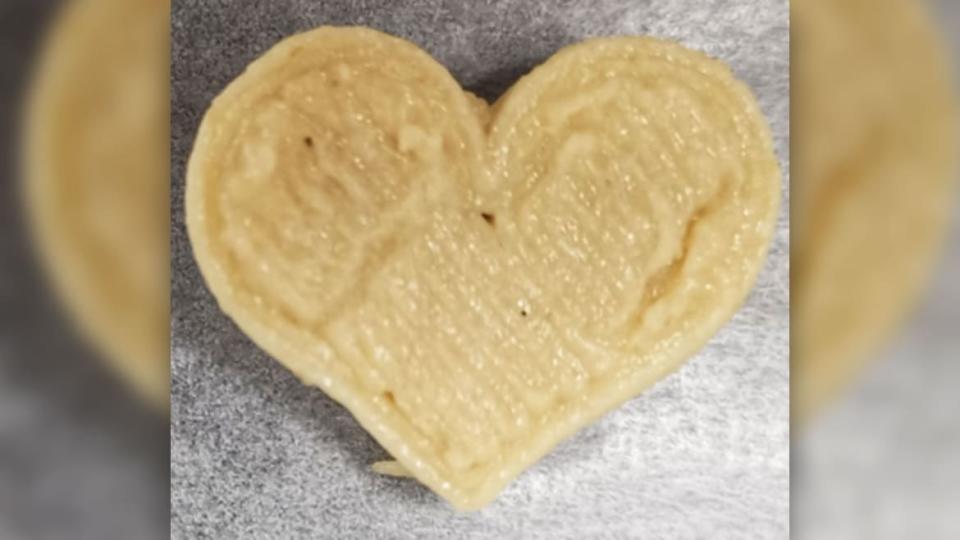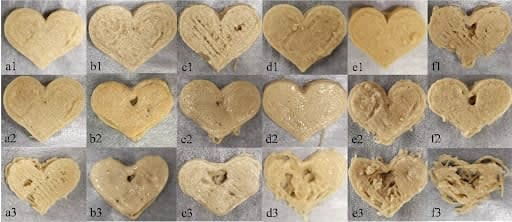This New Fake Meat Was 3D Printed With Cocoa Butter

Just a decade ago, people were ripping into the idea of ever eating artificial meat. Nowadays, plant-based meats are mainstream, found in national fast-food chains as well as local supermarkets. But the problem with these meat alternatives is that they don’t precisely mimic the specific biochemical arrangement of fat, muscle, and blood vessels found in actual meat cuts. And that’s a bit of a barrier to meatless alternatives to high-quality cuts like steak.
A 3D-printer could fix that by creating plant-based artificial meat that precisely resembles traditional cuts and gives the food a more authentic structure and texture. A pair of scientists from Zhejiang University in China have just come up with one recipe that requires a completely bizarre but critical ingredient: cocoa butter.
You’ll have to take their word for it—as you can see from the images presented, this 3D printed meat definitely looks more like a gelatinous dough than typical meat. But in a new study published in ACS Food Science & Technology, the researchers say their formulation is edible and nutritious, and contains about the same amount of protein as chicken.

Six different formulas (presented by row) were tested out and printed at three different temperatures (presented by column).
The formula is made primarily out of soy and wheat proteins, but it’s the cocoa butter that enables it to be 3D printed into actual structures. Cocoa butter, derived from cocoa beans, makes the dough more fluid at warm temperatures so it can actually be printed—but it also makes the structure harden quickly at room temperatures, so the meat doesn’t just fall apart after it's printed. The researchers themselves added shiitake mushroom powder to give it meat flavor, though the study doesn’t discuss whether the meat actually tastes good or not. (I’ll wait for a chef’s review before giving it a shot.)
The new recipe could be a problem for people who have gluten or soy allergies, and the researchers are looking into using protein from peas. No success with this so far, but after turning to cocoa butter, there’s surely no shortage of imaginative solutions.
Got a tip? Send it to The Daily Beast here
Get our top stories in your inbox every day. Sign up now!
Daily Beast Membership: Beast Inside goes deeper on the stories that matter to you. Learn more.

 Yahoo Finance
Yahoo Finance 